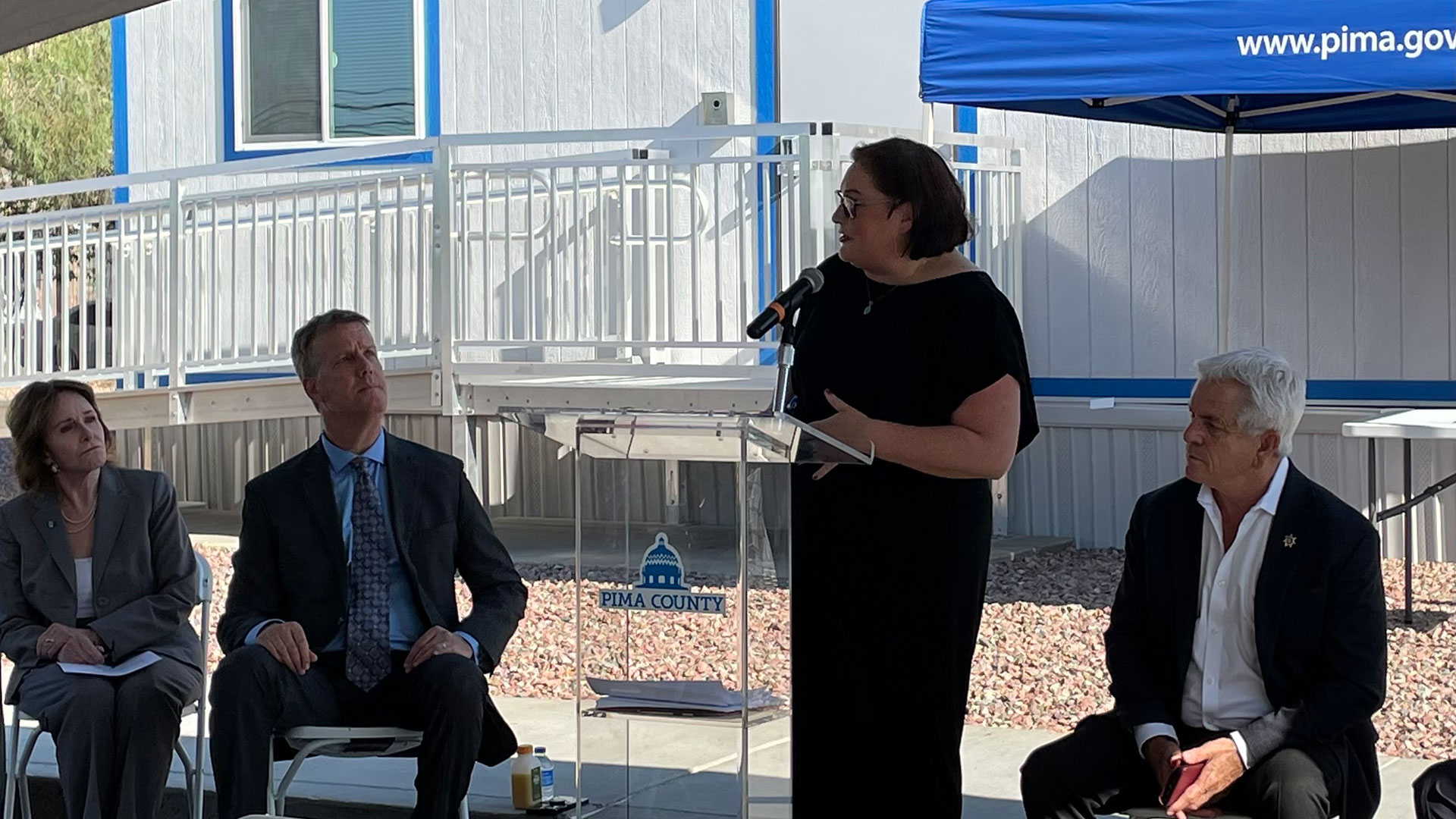 Justice Services Director Kate Vesely speaks at the official opening of the Pima County Transitions Center on Thursday, Sept. 7, 2023. From left to right: County Administrator Jan Lesher, Supervisor Rex Scott, Vesely, and Pima County Sheriff Chris Nanos.
Justice Services Director Kate Vesely speaks at the official opening of the Pima County Transitions Center on Thursday, Sept. 7, 2023. From left to right: County Administrator Jan Lesher, Supervisor Rex Scott, Vesely, and Pima County Sheriff Chris Nanos.
Pima County’s facility designed to reduce re-arrests has released data on its first year of operations.
The Jail Transition Center officially opened on Sept. 7, 2023, and has offered help to about 1,100 individuals as they were released from the Pima County Adult Detention Center, according to a report delivered to the Board of Supervisors this week.
Justice Services Director Kate Vesely says it also redirects about 150 bookings per month from the jail.
“Every time we avoid a future booking, not only are we reducing the jail population, we're making the community safer, we're limiting law enforcement resources and making it easier on the court system as well,” she said.
At its opening last year, Pima County Sheriff Chris Nanos and representatives from the Pima County Attorney’s office said the facility is necessary to help keep nonviolent offenders out of the jail system.
Funding from the Arizona Department of Housing provides about $75,000 a year for transportation and cell phone services, which are part of the facility’s effort to increase court appearances.
Vesely said transportation and friendly reminders are the most effective strategies to get individuals to their court dates, which prevents them from receiving additional Failure to Appear charges.
“Many individuals, if they're trying to remain sober, may find challenges utilizing some of the bus systems if they run into prior acquaintances. So having a taxi there helps significantly in avoiding any distractions,” she said.
But the facility’s biggest challenge remains a lack of emergency shelter, Vesely said, because these areas need to be available at critical points, especially in the evenings.
“People get arrested 24 hours a day. They get released 24 hours a day. And if 8 p.m. is that moment where they decide that they've had enough, if we can't get them into housing that night, then typically, they resort to going back to wherever it was that they got arrested from, which is predominantly an encampment,”
Funding from the American Rescue Plan pays for four employees and the building, but that money is set to expire in June next year. Vesely said the Transition Center is actively looking for new grants to continue operations into the future.

By submitting your comments, you hereby give AZPM the right to post your comments and potentially use them in any other form of media operated by this institution.